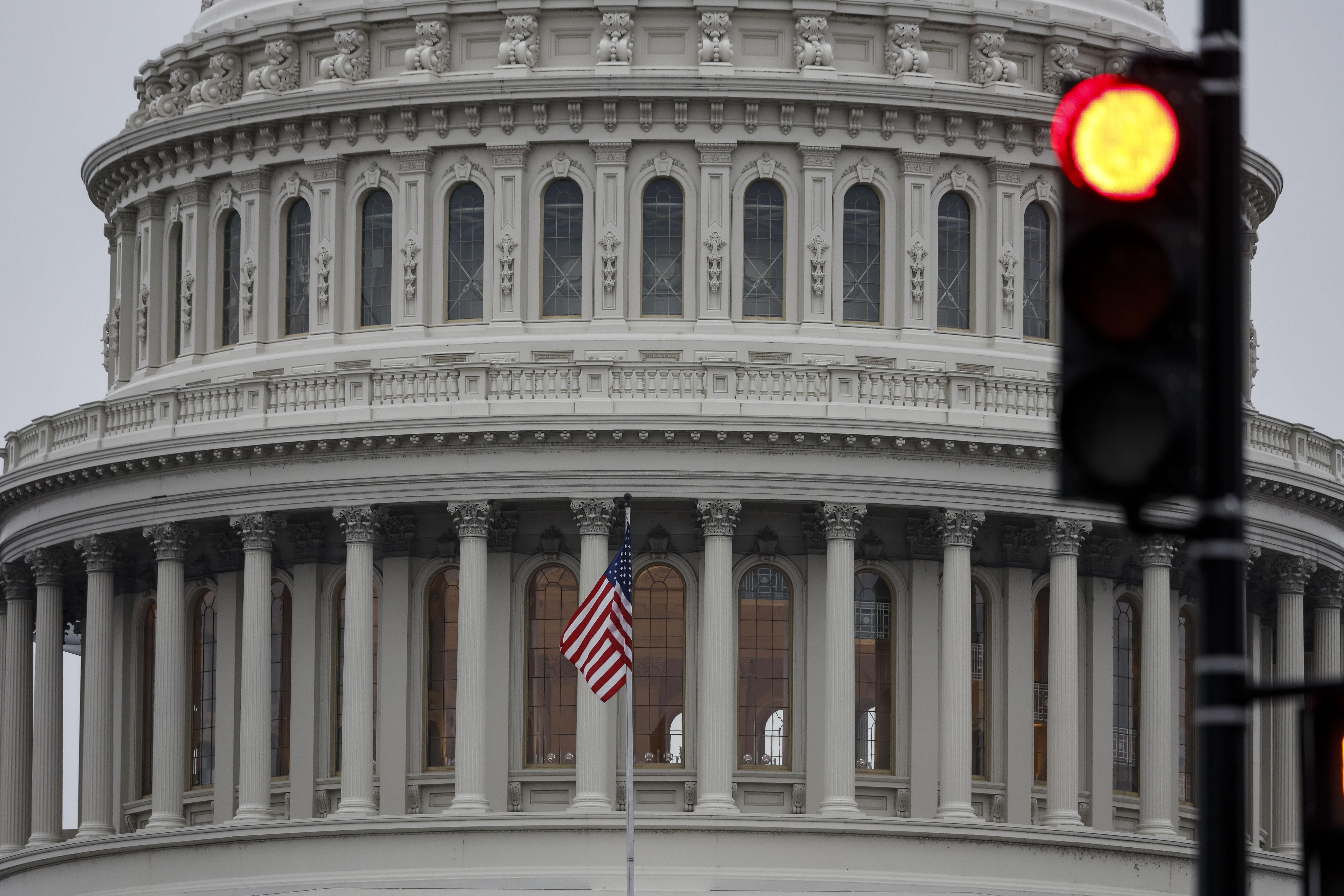Debt Ceiling Crisis Highlights Flaws in U.S. System

In fact, setting a debt ceiling is just a stopgap measure, or even a smokescreen, to show voters that the government has not been idle. But is it necessary to have an upper limit that can be constantly broken?
The debt ceiling crisis is a problem that plagues the U.S. government and society, and it has become more frequent in recent years. Not long ago, the U.S. debt ceiling faced another crisis. After a long period of repeated bargaining between the two political parties, they finally reached a compromise before defaulting. Republicans agreed to raise the debt ceiling again, but forced Democrats to make concessions on issues such as cutting defense and non-defense expenditures, including the recovery of COVID relief funds, cutting Internal Revenue Service funding, and increasing the minimum age for receiving food stamps without work. The compromise between the two parties is temporary, and both sides have members who are dissatisfied with the results. Moreover, since the root cause of the problem has not been resolved, another crisis is likely to occur soon.
The U.S. federal government relies on taxation and borrowing to fulfill its financial obligations. Its expenditures involve three parts: the first is statutory expenditures, including social security, medical insurance, retirement pension subsidies, etc.; the second is discretionary expenditures, including domestic, international and defense expenditures; and the third is interest payments on government borrowing. Since government taxation cannot meet its fiscal expenditure needs, borrowing has been the usual means of raising funds for successive U.S. governments. The main purchasers of U.S. government bonds are American people, institutions and foreign governments. The gold reserves of the United States were its early investment guarantees. After the U.S. abandoned the gold standard, the credit of the U.S. government became the main guarantee for attracting investment.
Money borrowed always needs to be repaid. If excessive borrowing occurs, it may cause the government to lose its ability to repay its debts. Therefore, in 1917, the U.S. passed the Second Liberty Bond Act, which authorized Congress to set a debt ceiling to control the issuance of various types of bonds. If the federal debt reaches the limit and the limit is not raised, the government will be unable to pay interest on its debt, and a federal debt default will occur. This could have serious consequences, including the Treasury Department’s inability to continue issuing debt; government shutdowns that result in the cessation of some services; U.S. bondholders’ inability to receive investment interest; bank runs; economic slowdowns; surging unemployment rates; and social unrest. Defaults could also have a serious impact on the global economy and financial markets, and could even trigger a global financial earthquake.

The debt ceiling is established by Congress and approved by the President. Changing the debt ceiling also requires legislative procedures. Since 1940, Congress has initiated legislation to change the debt ceiling more than 90 times, including 18 times since 2000. Before 1995, there was limited controversy over changing the debt ceiling. However, since then, the struggle between Democrats and Republicans over this issue has intensified. Republicans are generally opposed to raising the debt ceiling unconditionally. If they have to raise it, they require significant cuts in budget expenditures as a prerequisite. Democrats support raising the debt ceiling unconditionally to avoid a crisis, and support reducing the fiscal deficit by increasing taxes while opposing cuts in spending on social security and healthcare. Due to the increasingly polarized positions of the two parties in recent years and their refusal to compromise with each other, the debt ceiling issue has become a new hot potato in the U.S. politics and has even led to a downgrade in America’s credit rating. Overall, the U.S. political system and partisan struggles are the main causes of the debt ceiling issue.
First, the separation of powers between the executive and legislative branches is an important reason for the frequent occurrence of debt ceiling crises. The U.S. Constitution stipulates that Congress has the power to decide on the tax and expenditure plans of the country; the executive branch is responsible for proposing budget drafts for congressional approval and then responsible for specific expenditures. In reality, the executive branch understands the actual needs of government funds for national economy and people’s wellbeing, while Congress does not have relevant information; administrative leaders need to satisfy various needs of voters to gain political achievements, while Congress is responsible for supervising whether their actions are appropriate. The original intention of checks and balances is reasonable, but in actual operation, it is inevitable that both sides will fall into power struggles and often disregard the overall situation. Congress often does not pay much attention to the real financial pressures faced by national development, but focuses on restoring the “ideal state”; it also separates voting to raise the debt ceiling from voting to approve government expenditures or taxation in order to more effectively control the actions of the executive branch. The executive branch pays more attention to solving immediate problems as soon as possible, rather than caring about potential risks that increased fiscal spending may bring to future national development. It can be seen from this that the separation of powers between the executive and legislative branches is an insurmountable obstacle to solving the debt ceiling problem.

Second, the debt ceiling crisis is a specific manifestation of the U.S. government’s inadequate governance capabilities. The development of any country requires its government’s capital investment, and the days of not making ends meet are always difficult to last. Generally speaking, the proportion of outstanding national debt to GDP should not exceed 60%, which is a healthy indicator. Although some people believe that moderate fiscal deficits are beneficial to economic development, the current scale of U.S. federal debt has exceeded 31 trillion U.S. dollars, reaching 124% of GDP, and it’s still rising. The root cause of the continuous increase in U.S. debt lies in two points: one is that the government is selfish and blindly pursues utilitarianism, focusing only on immediate effects when spending without considering income and ignoring investment efficiency; secondly, when revenue falls short of expenditure, it does not reflect on itself but rather borrows from the future, shifts risks by borrowing from the world and eats into future resources. Therefore, the fundamental problem at present is debt rather than the debt ceiling. The U.S. government has always regarded raising the debt ceiling as a trump card to solve the problem of debt default, weaving a big trap with small benefits and ignoring the hard truth of repaying debts. This not only reflects its inadequate governance capabilities but also its irresponsibility.
Third, the intensification of struggles inside the Democratic and Republican parties has exacerbated contradictions. Generally speaking, the Democratic and Republican parties have opposing views on the debt ceiling issue, but the degree of opposition varies at different historical stages. In the past, both sides still had some basic consensus and could actively seek reconciliation before the crisis came. However, in recent years, there has been an obvious division within both parties, and populism and political polarization have increased their influence within the parties. Both parties have extreme factions that are different from traditional backbone forces, and their influence is growing. They are no longer afraid to cause internal divisions in their parties. This is particularly evident within the Republican Party. Currently, in the House of Representatives where the Republican Party has a slight advantage, more than 20 members of the Freedom Caucus have been clamoring for independence. During the election for Speaker of the House of Representatives earlier this year, these people showed a tough stance of refusing to compromise to their own party candidate Kevin McCarthy. They also did not care about McCarthy’s position on debt ceiling issue and tried to use their advantageous position to seek personal gain. The Progressive Caucus affiliated with the Democratic Party also poses an obvious constraint on the Biden administration. In the recent vote on the debt ceiling bill, 149 Republican lawmakers and 165 Democratic lawmakers voted in favor, while 71 Republicans and 46 Democrats voted against it. It can be seen that there are sizable opposition factions within both parties that are causing trouble for mainstream factions. As long as they exist, even if the mainstream factions of both parties try to reach a compromise on debt ceiling issue as soon as possible, they will face great difficulties.

Fourth, the debt ceiling issue has long been a tool for the two parties to attack their opponents. The debt ceiling is nominally a government governance issue, but in reality, it has always been a bargaining chip for both parties to attack their opponents. Since 1960, Congress has raised, extended, or revised the debt limit 78 separate times, of which 49 were under Republican presidents and 29 were under Democratic presidents. These figures are contradictory to the basic ideas of the two parties. Congressional Republicans who are fundamentally opposed to raising the debt ceiling do not mind violating their stated principles when their colleagues are in charge of the White House. For them, principles are secondary. What is important is how to protect themselves and attack their opponents. They do not oppose their own party leaders’ extravagance, but become “responsible” when their opponents control the White House. In addition, although both parties support reducing some federal spending, there are significant differences in which items need to be cut. The Republican Party’s goal is to reduce defense spending and some domestic spending projects, including federal law enforcement, medical insurance, expenses for addressing the issues of illegal immigration, climate change, and environmental governance; these are precisely the investment focuses that Democrats value. Let’s take a look at what Donald Trump did. He signed three bills supporting raising the debt ceiling during his tenure, but this year he was calling on Republican lawmakers to let the United States default on its debt if Democrats wouldn’t compromise. However, after the two parties finally reached a compromise, Trump did not say anything about it and focused most of his energy on promoting a golf tournament and attacking his Republican presidential rival Ron DeSantis. It seemed that he had lost interest in the debt ceiling issue. It is obvious that the debt ceiling issue is just a tool for the U.S. politicians to attack their opponents. Their position reflects partisan interests or even personal interests, rather than national interests.
In essence, the debt ceiling crisis in the U.S. is due to the U.S. government’s excessive spending. The debt ceiling is essentially set by Congress to prevent the White House from issuing too many bonds. However, since records began, the size of the U.S. government’s debt has repeatedly exceeded the limit, and the relevant system has not played a substantial restraining role. In fact, setting a debt ceiling is just a stopgap measure, or even a smokescreen, to show voters that the government has not been idle. But is it necessary to have an upper limit that can be constantly broken? If the U.S. government does not reflect on its root cause, it will only lead to a continued increase in the debt ceiling, a continuous decline in government credit, and the potential hazards that may occur at any time due to the spillover effect of its domestic issues on the world economy.
The author is a researcher at the Institute of American Studies, Chinese Academy of Social Sciences.
 Facebook
Facebook
 Twitter
Twitter
 Linkedin
Linkedin
 Google +
Google +










